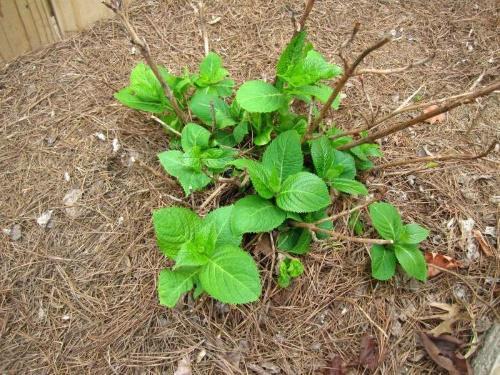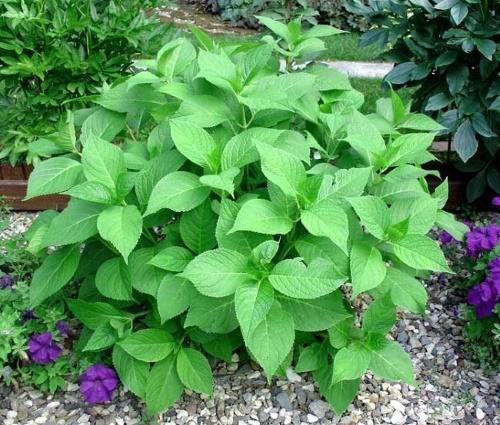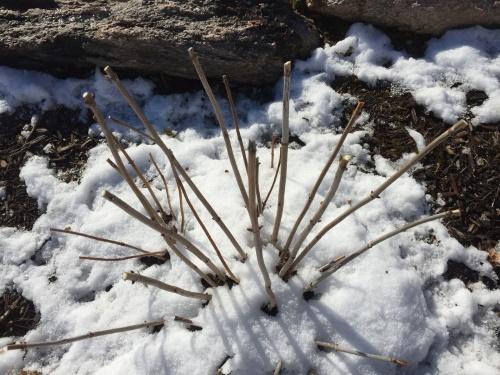Hydrangea grows poorly - cause and solutions
 More and more gardeners prefer hydrangeas. Not all garden crops can please with such colorful and abundant flowering, and large inflorescences are immediately striking. However, sometimes gorgeous bushes upset the owners, slowing down their development. If the hydrangea grows poorly, the cause can be very different, from mistakes in care to plant disease. Knowing what factors influence the harmonious development of culture, you can help it in a timely manner.
More and more gardeners prefer hydrangeas. Not all garden crops can please with such colorful and abundant flowering, and large inflorescences are immediately striking. However, sometimes gorgeous bushes upset the owners, slowing down their development. If the hydrangea grows poorly, the cause can be very different, from mistakes in care to plant disease. Knowing what factors influence the harmonious development of culture, you can help it in a timely manner.
Hydrangea grows poorly - the cause of the problem and how to fix it

- unsuccessful wintering;
- improper trimming;
- depletion of the soil;
- disease or pest attacks.
What to do if hydrangea winters badly and does not grow?
 Not all varieties of hydrangea are highly winter-hardy, and this should be taken into account. When choosing seedlings, it is worth giving preference to those species that are capable of growing in local climatic conditions. But they will also need extra care in particularly frosty winters, especially if there is little snow. Without shelter, the root system freezes up, and the above-ground part of the bush may suffer. Of course, in this case it is difficult for hydrangeas to develop adequately. You can help the shrub by conducting sanitary pruning and providing regular complex feeding.
Not all varieties of hydrangea are highly winter-hardy, and this should be taken into account. When choosing seedlings, it is worth giving preference to those species that are capable of growing in local climatic conditions. But they will also need extra care in particularly frosty winters, especially if there is little snow. Without shelter, the root system freezes up, and the above-ground part of the bush may suffer. Of course, in this case it is difficult for hydrangeas to develop adequately. You can help the shrub by conducting sanitary pruning and providing regular complex feeding.
To help the roots, it is recommended to make a warm "pillow" of humus... It will generate heat, warming the roots, and will also serve as a fertilizer.
Effect of pruning on hydrangea growth
 All hydrangeas, without exception, need the pruning procedure, because it stimulates the branching of the bush. However, some types require minimal intervention. This applies to plants that lay flower buds at the tips of last year's branches, for example, hydrangea:
All hydrangeas, without exception, need the pruning procedure, because it stimulates the branching of the bush. However, some types require minimal intervention. This applies to plants that lay flower buds at the tips of last year's branches, for example, hydrangea:
- serrated;
- oak-leaved;
- large-leaved;
- prickly.
Radical pruning of these varieties of shrubs will not only slow down its growth, but also postpone flowering. Therefore, before proceeding with a haircut, it is worth remembering which variety is growing in the garden.
How to feed a weakly growing hydrangea when the soil is depleted?
 The lag in growth is especially noticeable on those bushes that are "starving". Without regular feeding, the hydrangea is simply trying to survive, and there is no time for a new growth. The introduction of nitrogen fertilizers in early spring will give a good impetus - they will help start growth. Before laying the buds, it will be more expedient to switch to mineral complexes.
The lag in growth is especially noticeable on those bushes that are "starving". Without regular feeding, the hydrangea is simply trying to survive, and there is no time for a new growth. The introduction of nitrogen fertilizers in early spring will give a good impetus - they will help start growth. Before laying the buds, it will be more expedient to switch to mineral complexes.
Some hydrangeas (large-leaved and paniculate) prefer acidic soils. Do not forget about this, periodically acidifying the soil with oxalic acid (2 tablespoons per bucket of water).
How to help hydrangea affected by disease or pests?
 The development of the hydrangea slows down, or even the bush begins to disappear altogether if the plant attacks:
The development of the hydrangea slows down, or even the bush begins to disappear altogether if the plant attacks:
- gray rot - treatment with Fundazol is needed;
- chlorosis - Ferovit will help;
- powdery mildew - you will need Topaz or Skor fungicides;
- peronosporosis - it is necessary to spray with a soapy solution with the addition of copper sulfate;
- septoria - immediate treatment with copper sulfate.
You can free the hydrangea from pests by spraying it with soap and garlic solution. And from slugs and snails will relieve insecticide Decis.